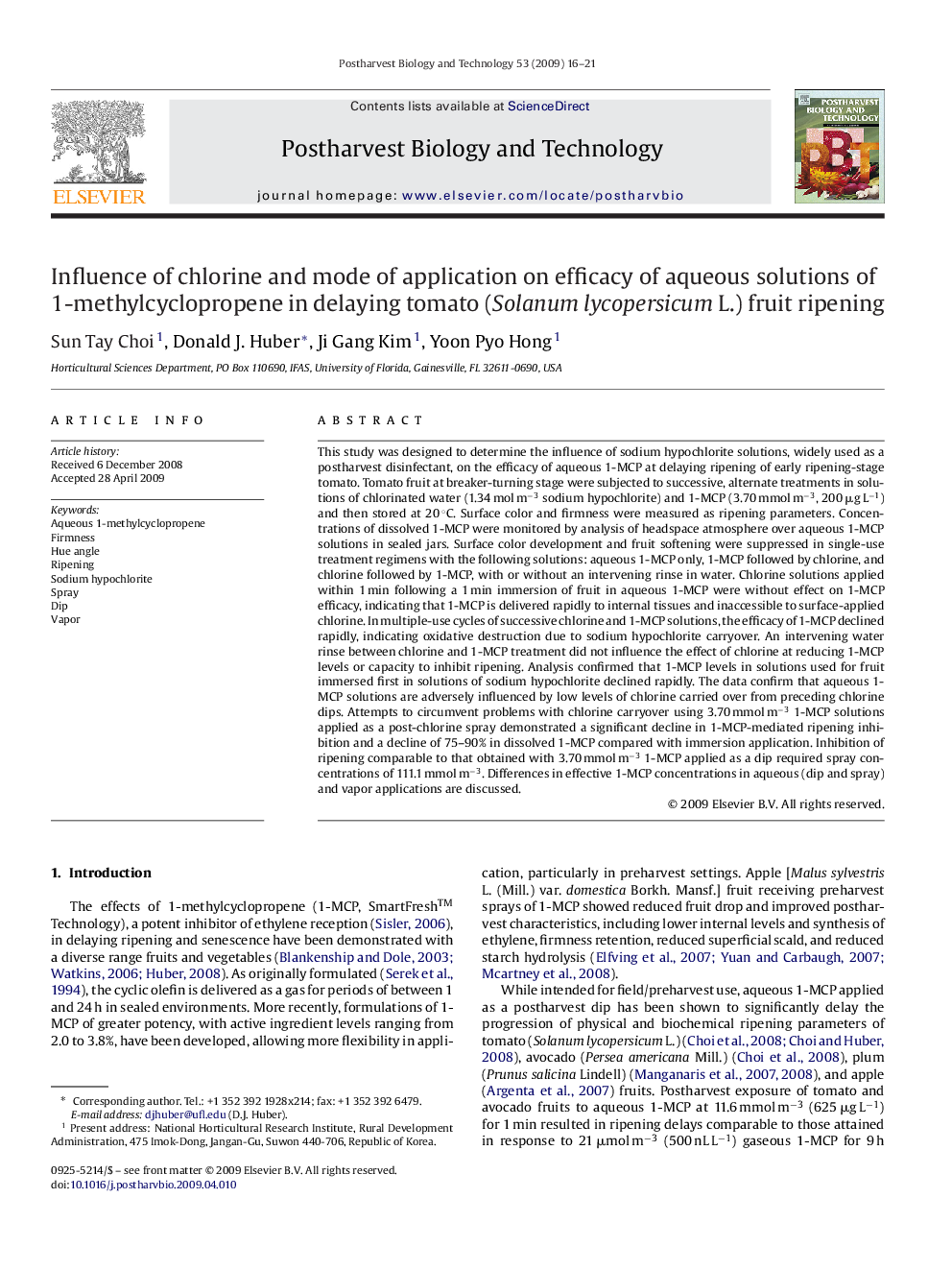| Article ID | Journal | Published Year | Pages | File Type |
|---|---|---|---|---|
| 4519350 | Postharvest Biology and Technology | 2009 | 6 Pages |
Abstract
This study was designed to determine the influence of sodium hypochlorite solutions, widely used as a postharvest disinfectant, on the efficacy of aqueous 1-MCP at delaying ripening of early ripening-stage tomato. Tomato fruit at breaker-turning stage were subjected to successive, alternate treatments in solutions of chlorinated water (1.34 mol mâ3 sodium hypochlorite) and 1-MCP (3.70 mmol mâ3, 200 μg Lâ1) and then stored at 20 °C. Surface color and firmness were measured as ripening parameters. Concentrations of dissolved 1-MCP were monitored by analysis of headspace atmosphere over aqueous 1-MCP solutions in sealed jars. Surface color development and fruit softening were suppressed in single-use treatment regimens with the following solutions: aqueous 1-MCP only, 1-MCP followed by chlorine, and chlorine followed by 1-MCP, with or without an intervening rinse in water. Chlorine solutions applied within 1 min following a 1 min immersion of fruit in aqueous 1-MCP were without effect on 1-MCP efficacy, indicating that 1-MCP is delivered rapidly to internal tissues and inaccessible to surface-applied chlorine. In multiple-use cycles of successive chlorine and 1-MCP solutions, the efficacy of 1-MCP declined rapidly, indicating oxidative destruction due to sodium hypochlorite carryover. An intervening water rinse between chlorine and 1-MCP treatment did not influence the effect of chlorine at reducing 1-MCP levels or capacity to inhibit ripening. Analysis confirmed that 1-MCP levels in solutions used for fruit immersed first in solutions of sodium hypochlorite declined rapidly. The data confirm that aqueous 1-MCP solutions are adversely influenced by low levels of chlorine carried over from preceding chlorine dips. Attempts to circumvent problems with chlorine carryover using 3.70 mmol mâ3 1-MCP solutions applied as a post-chlorine spray demonstrated a significant decline in 1-MCP-mediated ripening inhibition and a decline of 75-90% in dissolved 1-MCP compared with immersion application. Inhibition of ripening comparable to that obtained with 3.70 mmol mâ3 1-MCP applied as a dip required spray concentrations of 111.1 mmol mâ3. Differences in effective 1-MCP concentrations in aqueous (dip and spray) and vapor applications are discussed.
Related Topics
Life Sciences
Agricultural and Biological Sciences
Agronomy and Crop Science
Authors
Sun Tay Choi, Donald J. Huber, Ji Gang Kim, Yoon Pyo Hong,
